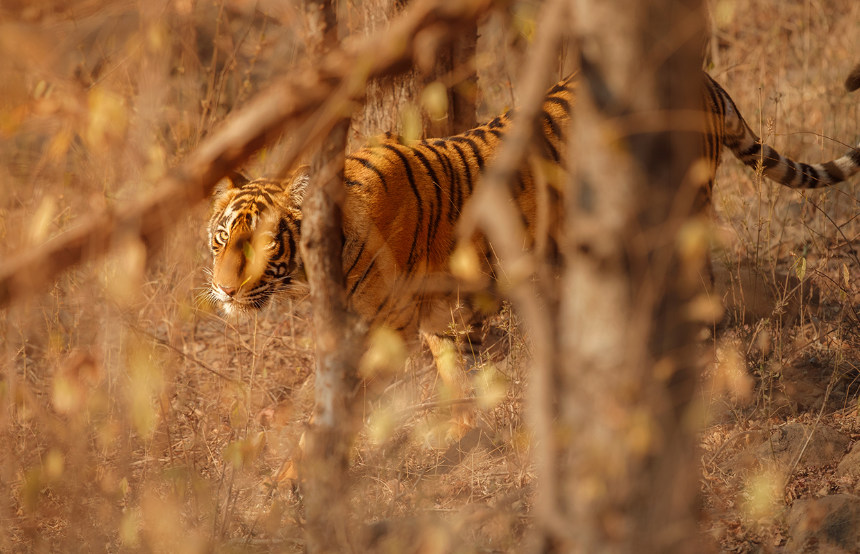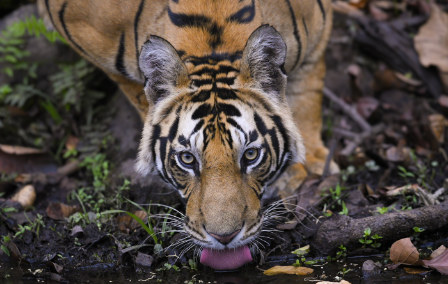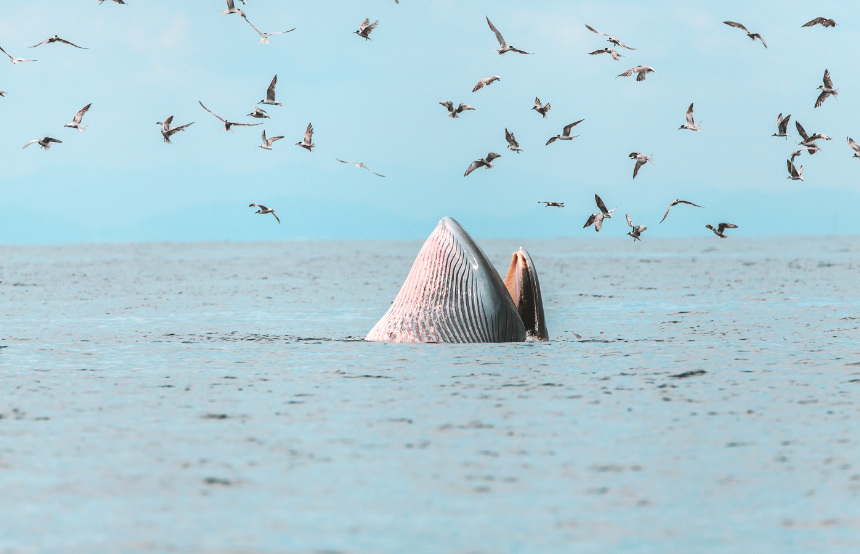Published 23rd Dec. 2024
Reading time
Whether spotting your favourite big cats or learning about local conservation efforts together, family safaris are the ultimate bonding experience. But what if you could maximise your chances of seeing Simba and co. in the wild? We asked our resident safari experts for their insider intel on seeking out unforgettable animal encounters. From picking up scents to playing detective, there are plenty of ways the little ones can get involved and increase their sense of adventure. Read on for our top family safari tips and tricks…
Because of the way we read and write, Westerners’ eyes are used to tracking from left to right. On safari, that tends to become our way of scouring the horizon, too. Reverse things – so survey from right to left instead – and the novelty immediately forces your brain to be more alert. While scanning, look for unusual, out-of-place shapes or colours – and be prepared to accept that at least 50% of them will, maddeningly, turn out to be termite mounds rather than a pride of lions.
Prey animals, from baboons to francolins, emit specific warning calls – usually to alert other group members – whenever they glimpse a predator. The best alarm calls to recognise are those of bushbucks, nyalas and, most reliably of all, kudus. The latter’s loud bark tends to be a cast-iron guarantee that a lion, leopard or cheetah is close. Pinpoint the kudu call, and you have a great chance of locating an elusive predator nearby, especially if you can see the direction in which the sentinel is staring.

Leopards notoriously like to haul their kills up into trees, where other bigger, non-climbing predators can’t plunder them. Less recognised, however, is the fact that they tend to favour certain types of trees; keep your eyes peeled on the branches of shady jackalberry, sausage trees, marulas and weeping boer-beans. Leopards aren’t the only animals with a head for heights, either. Giraffes relish acacia tree leaves above all, and that same genus – along with sycamore figs – proves popular among Uganda’s tree-climbing lions. Cheetahs, meanwhile, are most often found in open, flattish grasslands, where they can seek cover and still clock dangerous hyenas or lions from afar.
It’s a wholly unpleasant smell, but the putrid stench of an animal carcass is like a safari flare: until completely devoured, remains may be the scene of scavenging hyenas, vultures – perhaps waiting in trees or circling ominously above – and, when near water, crocodiles. Other useful aromas to recognise are the popcorn-esque pong of leopards’ scent-marking urine, elephants’ equine aroma and the cow-like whiff of buffalo herds.

Most prey animals drink during mornings and early evenings to avoid the heat of the day and attack by unseen predators who stalk rivers or springs at such hours in the hope of a potential meal. Consequently, lingering quietly near a water source at sunrise or sunset should greatly increase your chances of memorable encounters.
The cooler hours of the day, around dawn and dusk, tend to be when animals are at their most active. Come hotter times of day, you’re better off looking under shady trees for lazing lions or seeking out reptiles who use the sun to kick-start their metabolism.

Don’t let restlessness get the better of you. Even if your children suggest moving on, give it a bit longer. Sitting still and quietly (crucial) often yields wondrous rewards in the end – just as moving rarely does.
'What would Sherlock Holmes think?’ Always a useful adage when inspecting animal footprints on walking safaris. Lions love to use human roads or tracks (because they’re far less effort to traverse than dense bush), and they often leave tell-tale tracks, which are especially visible at dawn. Fresh elephant or rhino dung is helpful evidence that they passed by not long before; ditto the calcium-white scat of hyenas. Encourage the children to try to distinguish the tracks or droppings of their favourite animals to improve the odds of seeing them.
All images by Olivier Romano
Practical advice and inspiration for your next trip

Searching for the best safaris in India? We’ve got you covered. Whether you’re keen to track tigers in Madhya Pradesh, admire Asiatic lions in Gujarat or photograph forest eagle owls in Kerala, your India holiday awaits. While Bengal tigers steal the limelight in Bandhavgarh National Park, don’t forget about the shaggy sloth bears (though they’re not as cuddly as they look). Feeling up for the adventure?
15th September 2025 - India Safari & Wildlife

With their sleek, tangerine-tinged coats, piercing eyes and commanding presence, nothing beats the thrill of seeing a tiger in the wild. And where better than in India, home to the largest population on Earth? But when it comes to the best time to see tigers in India, it all depends on what you want from your trip. Whether you’d rather vivid green landscapes or crowd-free safaris, we’ve got the insider intel on when to see India’s famous big cats.
23rd June 2025 - India Safari & Wildlife

Where are the best places for whale watching? We’re glad you asked. From the picturesque Icelandic town of Husavik to the coastal haven of Mirissa in Sri Lanka, there are plenty of destinations to marvel at these majestic creatures. Picture this: the air is still and all you can hear is the creaking of the catamaran and the odd, excited whisper. You scan the horizon, desperate to spot the tip of a fluke or a distant plume of whale breath.
16th June 2025 - Safari & Wildlife

Our team of destination experts will get to know you and your unique requirements for your holiday

We work with you to build an ultra-personalised holiday itinerary with your choice of accommodation, experiences and activities

All of our holidays include little extras designed to make a big difference to your trip, from fast-tracking you through airport check-in and security to our network of local Concierges